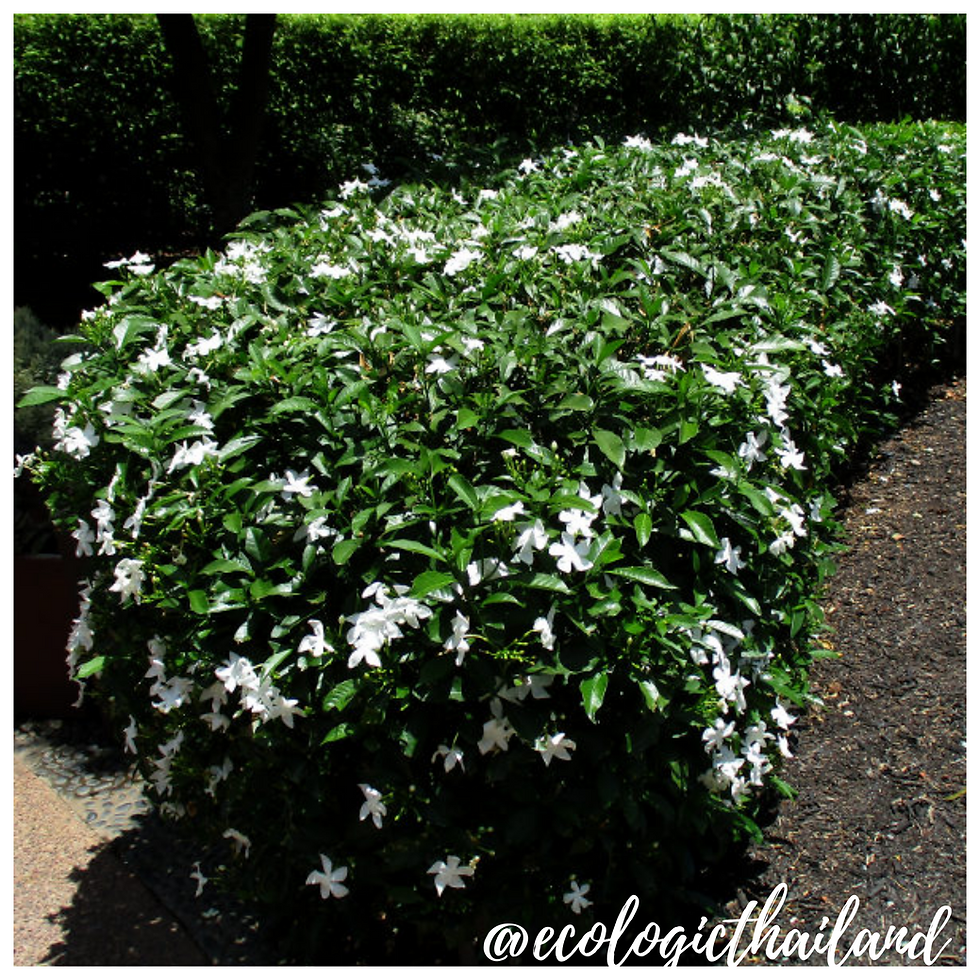Thai Tangerine
- Eco-Logic Resort
- Dec 9, 2020
- 3 min read
Som| ส้ม | Citrus tangerina
Family: Rutaceae- Genus: Citrus

Tangerines are grown in the area of Paksong - Phato on plantations. You might encounter them on your hikes in the area.
Thai Tropical Tangerines (Citrus Tangerina ) are unusual as they have green skins as opposed to bright orange ones you are used to seeing when ripe. The skin is very much thinner, green, and easier to peel.
Tangerines are smaller and less rounded than common oranges. The taste is considered less sour, as well as sweeter and stronger, than that of an orange. A ripe Thai tangerine is firm to slightly soft, and pebbly-skinned with no deep grooves, green as well as orange in color. The peel is thin.
Thai Tangerines can be harvested when the tree is 3 - 5 years old. Mandarin can be harvested all year round, but the season from January to April gives the sweetest mandarins.

THE TREE
It is a small fruit tree which is intolerant to cold It is cultivated in subtropical regions of both the Old World and the New World
The tangerine trees are small reaching 4 to 6 m in height.

THE LEAVES
The tangerine tree has lanceolate leaves measuring 3 centimeter long having narrow wings on petioles.
Citrus leaves are edible too, it will add flavor when added to soups, sauces, or curries. Using leaves is much like using bay leaves, often with spices such as cloves or cinnamon.

THE FLOWERS
Flowers are white and aromatic which forms singly or in two or three clusters.
The blossoms can be cooked or eaten raw.

THE FRUIT
The small oblate fruits measuring 7.5 cm in diameter ripens to green and orange.
The juicy and sweet pulp is divided into 10 to 14 segments which separate easily from each other and from thin peel or skin.
CULINARY USES
Tangerines are most commonly peeled and eaten by hand. The fresh fruit is also used in salads, desserts and main dishes.
The peel is used fresh or dried as a spice or zest for baking and drinks.
Fresh tangerine juice is served in our food forest restaurant.
The blossoms can be cooked or eaten raw as part of a salad.
Citrus leaves are edible too, it will add flavor when added to soups, sauces, or curries. Using leaves is much like using bay leaves, often with spices such as cloves or cinnamon.
Citrus leaves pair well in salads or desserts with fruits such as pineapple or mango.
Both orange and lemon leaf uses can include hot, tangy tea. Crush the leaves and add them to a pot of boiling water. Let them boil for five minutes, cool, strain, and serve.
NUTRITION
Thai tangerines are very sweet and low on acid.
Tangerines have high content of Vitamin C and A, potassium ad calcium and are consumed generally as fresh fruit and is also processed into juice or beverages and cocktails. It is also a great source of folate and beta-carotene. It also contains magnesium, potassium, vitamins B2, B1 and B3 as well as compounds such as zeaxanthin and lutein.
TRADITIONAL MEDICINAL USE OF TAMARIND
NOTE: please take advice from a doctor if you are planning to use herbal medicine.
Tangerine is used in Ayurvedic medicine for general debility, urinary retention, anorexia, indigestion, sexual weakness and hepatitis. It is used to treat gastro-intestinal distention, dyspepsia, vomiting and hiccups.
INTO THE WILD: a down to earth experience

For guests and visitors to Paksong we organize weekly tours "The Edible Forest" and Foraging weekends: Into the Wild. We work with local guides to take you in the jungle of Paksong. After foraging, we will cook a meal with the ingredients, using bamboo together with you!
Come and join and learn about the abundance of food that nature gives us!
INTO THE WILD!


















Comments